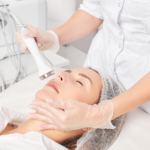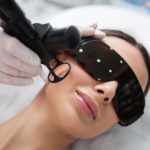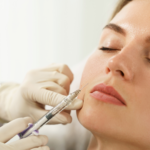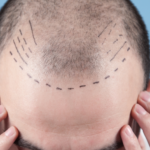Moles
Moles, those familiar raised spots on the skin, are medically termed as melanocytic nevi. They can either be present from birth or develop over time, typically peaking in formation during one’s twenties. While having 10-15 moles on the body is normal, their appearance can vary in size and color, ranging from small pin-sized dots to larger, darker spots.
Although moles are generally harmless, they can cause concern for cosmetic or precautionary reasons related to conditions like melanoma, a form of skin cancer.
What Triggers Moles?
Moles occur when skin cells known as melanocytes cluster together, forming a pigmented bump or spot. Sun exposure is a significant factor in stimulating melanocyte activity, making it a possible cause of moles. Additionally, genetic predisposition plays a role in mole development.
Who is at Risk?
Factors that contribute to the risk of developing moles include:
Genetics: Family history can influence the likelihood of developing moles, with a tendency to pass through generations.
Sun Exposure: Prolonged or excessive sun exposure increases the risk of developing moles on the skin.
Skin Color: While not conclusively proven, fair-skinned individuals are often believed to be more susceptible to developing moles.
Signs of Moles:
Moles can appear anywhere on the body, but they are commonly found between fingers, on the back, forehead, scalp, or under the armpits. They may vary in color, size, and texture, ranging from flat to raised surfaces. General signs of moles include:
Round or irregular shapes
Flat or raised surfaces
Variety of colors, including brown, tan, black, red, pink, blue, or skin-toned
Stability in appearance over time
Preventing Moles:
While genetics cannot be altered, reducing sun exposure is key to preventing moles. Strategies include wearing sunscreen, protective clothing, and avoiding peak sun hours.
Advanced Moles Removal Treatments at Oasis:
While most moles are harmless, individuals may opt for removal for cosmetic or precautionary reasons. Treatment options at Oasis include:
CO2 Laser: This non-invasive method utilizes laser technology to vaporize moles safely without causing side effects.
Surgical Excision: In this procedure, the mole is surgically removed, and the surrounding skin is stitched. Biopsy may be performed to rule out skin cancer suspicions.
Why Choose Oasis?
Oasis boasts expert Cosmetologist trained in prestigious institutions, equipped with advanced technology to ensure optimal results. With a focus on patient satisfaction and safety, Oasis offers personalized mole treatment solutions tailored to individual needs. Book an appointment today and regain confidence in your skin’s appearance!





